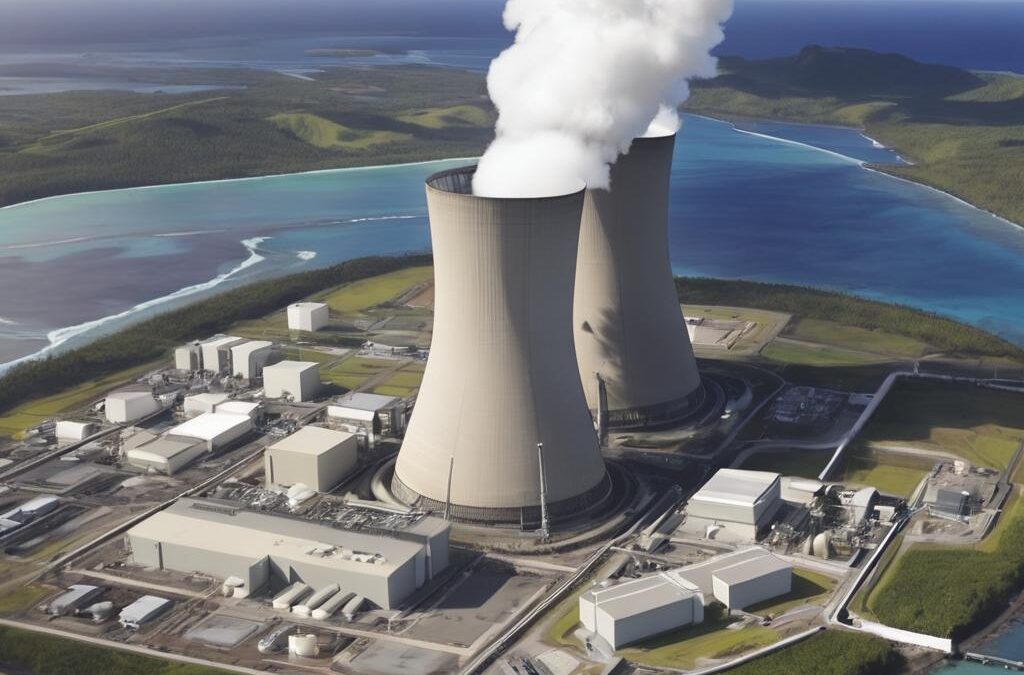Australia’s net-zero strategy
The Australian Albanese government may have acted too hastily in phasing out its coal-powered power stations to meet its Net-Zero target of achieving 43% emissions reductions by 2030. The renewables to provide the replacement baseload power are evidently not quite ready, and a technology gap is becoming evident.
The (Coalition Party) opposition has been quick to seize the opportunity, and propose nuclear power as a clean energy option to fill the vacuum. According to its nuclear plan, the Coalition’s alternative strategy will build seven nuclear power stations at the locations of retiring or retired coal power stations around Australia to meet the baseload power demand, with the first plant to become operational between 2035 and 2037.
But will it work? And how good is it as a fix to the current net zero strategy?To establish a rational basis for an answer, one must first determine what the actual requirements are for a viable net-zero strategy.
Carrying out this simple exercise shows that the nuclear option does not satisfy at least two key requirements for a viable net zero strategy. And the hazards, due to the highly volatile and unpredictable regional geopolitics of the region, of building new nuclear power plants in the Pacific are too great to even contemplate.
Requirements for a net-zero strategy
The key requirements for a viable net-zero strategy of a country must include the following mandatory criteria:
- The strategy must produce quantifiable reductions in emissions of greenhouse gases (GHGs) from sources such as fossil fuels and removals by sinks such as forests.
- Any proposed new technology to replace an old one must have demonstrated capacity to reduce emissions (i.e. the avoided emissions must be shown to be positive and significant)
- The strategy must ensure that any new solution does not introduce unacceptable risks and hazards to the wellbeing of communities and their environments
- The strategy must be achievable within the timeframe and deadlines specified by the Paris Agreement
- Ensure that any new technology is tested and market-ready.
The nuclear option
The nuclear option clearly misses out on the 3rd and 4th criteria. Its hazards to human health and safety are well known. And according to the Coalition’s own admission, it will not be ready by the 2030 deadline. It might probably have difficulties with the 2050 deadline also. But this is academic, as the purpose would have well and truly been defeated by this time. Thus nuclear does not satisfy the overall criteria for a viable net-zero strategy. In addition, while it has been tried and tested in many countries abroad, it has never been part of the Australian grid supply.
The major issue of hazard to human wellbeing deserves further discussion. While this has been well-documented by history, it is worthwhile to re-call what has happened in the past.
The history of nuclear disasters
Warning of the environmental risks of nuclear power was first sounded by the three-mile partial melt-down at Harrisburg Pennsylvania in on 28 March 1979. While the event itself did not eventuate in any serious threats tocommunities locally or more broadly, it did provide a wake-up call to the authorities for the need for stringent safety regulations and protocols in the administration of nuclear power.
Then theChernobyl Nuclear Disaster took place on the 26th of April 1986. It was caused by the explosion of Reactor 4 of the four nuclear reactors at the Chernobyl power station in Chernobyl, Ukraine during the Soviet era. The explosion produced a mushroom cloud, scatteredhighly radioactive debris all over the power station and the surrounding city, and spewed out radio-active fission products into the atmosphere for many days.
It was a nuclear disaster whose true horrifying impact remained hidden from the world’s view till as late as 2022, when the lost tapes of the catastrophe (diligently videoed by the Soviet authorities while the disaster was unfolding) were found (See Chernobyl: The Lost Tapes – Sky UK 2022 and SBS On Demand Australia 2024).
As if the world needed another reminder of the unpredictability of nuclear disasters, on 11 March 2011, an earthquake of magnitude 9.0 on the Eastern Coast of Japan produced a tidal wave which flooded the Fukushima-Daiichi Nuclear Power Plant, causing the Fukushima Nuclear Disaster.
The nuclear reactors had been automatically turned off as soon as the earthquake took place, and diesel generators turned on to pump coolant water around the nuclear core. But the flooding disabled the diesel generators, and while desperate attempts were being made to turn them on again, the cores overheated and partially melted the cores – an event known as a nuclear melt-down. Radio-activity leaked out into the atmosphere and into the Pacific Ocean.
While the Fukushima disaster did not lead to anyserious health issues such as increases in cancer rates, what is important is to note that the world (or most of it anyway) has seemingly not learnt anything about the unpredictability of nuclear disasters from lessons as early as Harrisburg in 1979 to the recent Fukushima accident in 2011.
“Weaponization” of nuclear safety and security
What is even more concerning is the possibility that future nuclear power plant explosions and melt-downs could result from deliberate (targeted) attacks rather than pure accidents.According to CNN news (8 April 2024), the drone attack that forced the shutdown of the 6 reactors at Ukraine’s Zaporizhzhia Nuclear Power Plant (ZNPP) this year could have been a form of “Russian nuclear blackmail aimed at both Ukraine and international community” with the threat of nuclear melt-down leading to a Chernobyl-like disaster.
With the prospects of increasing geopolitical conflict in the Pacific region in the foreseeable future, the building of 7 nuclear power plants where there were none before will only increase the risks of similar threats in the Pacific region. The socio-economic fall-out can be devastating. We simply cannot afford it.
#NetZero_Australia #EnergyTransition_Australia #NuclearPower_Option #History_of_Nuclear_Power #Chernobyl:LostTapes

Recent Comments